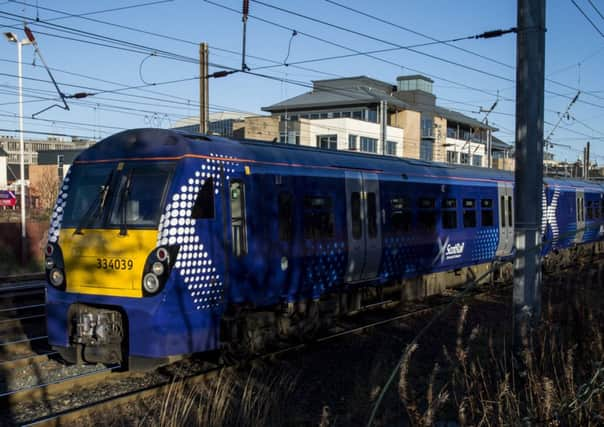Transport team set up for Scottish events in 2014


A special Scottish Government team has been formed to mastermind travel for the Commonwealth Games, Ryder Cup and Armed Forces Day, and anniversaries for the Battle of Bannockburn, First World War and Forth Road Bridge.
With control of transport largely devolved to Scotland, ministers will be anxious to avoid any significant problems in the run-up to the independence referendum on 18 September – a month after the Games.
Advertisement
Hide AdAdvertisement
Hide AdThey want to ensure the country’s transport system “makes a full contribution to the success of each event and enhances our nation’s worldwide reputation”.
Plans include minimising roadworks and making the Games “car-free”.
The sporting extravaganza in Glasgow from 23 July will involve up to 600,000 extra journeys a day as 100,000 spectators travel between venues.
Nearly half will be travelling to Scotland for the Games, staying as far afield as Ayrshire, Loch Lomond and Edinburgh.
Parking will be banned around venues with free public transport for spectators. Officials hope there will be enough spare seats on buses and trains during the less busy school holiday period for Games spectators.
A “Games route network” of roads linking venues for athletes and officials will involve traffic restrictions.
Glasgow is expected to be even busier the day after the closing ceremony on 4 August when a commemoration service to mark the start of the First World War coincides with athletes and officials heading home.
In June, 100,000 people are expected to descend on the Stirling area for Armed Forces Day and the Battle of Bannockburn’s 700th anniversary, which take place over the same weekend.
Advertisement
Hide AdAdvertisement
Hide AdIn September, 45,000 spectators and officials a day are due for the Ryder Cup golf tournament at Gleneagles in Perthshire.
Earlier, 30,000 are anticipated for a firework display to mark the 50th birthday of the Forth Road Bridge.
Other events expected to generate extra travel include the Queen’s Baton relay, which will tour Scotland from 14 June, in the run up to the games.
2014 is also the second Year of Homecoming, to encourage people with Scots ancestry to visit, with 400 events. The first, in 2009, attracted 72,000 arrivals.
Motoring experts said it was crucial that transport and other organisations worked together to ensure there were no problems.
Neil Greig, the Scotland-based policy and research director of the Institute of Advanced Motorists, said the Scottish Government’s Transport Scotland agency must also ensure people were well informed.
He said: “It’s going to be a real challenge and one they have been working on for a long time.
“Lessons have been learned from the Olympics and they have experts from London helping them.
Advertisement
Hide AdAdvertisement
Hide Ad“I am confident it will work, but only if everyone is flexible and willing to work together.
“It’s important the international image impacts of these events are fully understood and any local problems are resolved quickly.
“The key will be advance publicity, so visitors know what to do and those directly affected can plan accordingly.”
Transport minister Keith Brown said transport was key to the success of the 2014 events.
He said: “Scotland’s transport system is amongst the best in Europe and 2014 offers a marvellous opportunity to showcase this.
“Transport Scotland is at the heart of planning, keeping delivery arrangements under review to make sure our transport system makes a full contribution to the success of each event and enhances our nation’s worldwide reputation.
“This government is focused on keeping Scotland moving, and everyone can contribute by planning their journeys carefully to avoid peak-time congestion and making the decision to use public transport, walk or cycle to minimise delays.”